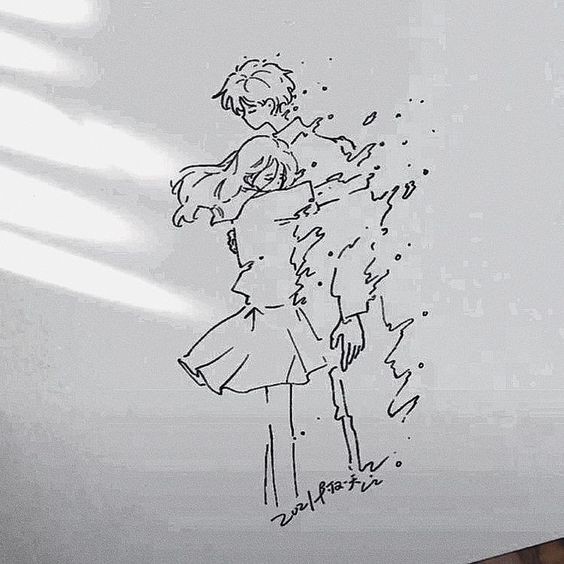Sad Drawing: Exploring the Depths of Emotional Expression Through Art
Sad Drawing is a poignant art form that delves into the complexities of sorrow, melancholy, and introspection. Through evocative imagery and expressive techniques, artists capture the essence of sadness and convey deep emotional experiences. This article explores the nature of Sad Drawing, examining its techniques, inspirations, and the impact it has on both artists and viewers.
The Concept of Sad Drawing
Sad Drawing involves creating artwork that reflects themes of sadness, grief, and emotional struggle. Unlike other forms of art that may focus on joy or beauty, Sad Drawing embraces the raw and often challenging aspects of human experience. It seeks to express and evoke feelings of sadness, using art as a medium to explore and communicate these deep emotions.
Historical Context
Throughout history, art has been a means of exploring and expressing complex emotions, including sadness:
Romanticism: In the 19th century, Romantic artists such as Francisco Goya and Eugène Delacroix depicted intense emotional states, including despair and melancholy. Their works often conveyed the personal and societal struggles of their time.
Expressionism: The Expressionist movement of the early 20th century, led by artists like Edvard Munch and Egon Schiele, focused on portraying raw emotional experiences. Expressionist art often features distorted forms and dramatic use of color to convey deep psychological states.
Modern and Contemporary Art: In modern and contemporary art, artists continue to explore themes of sadness and emotional complexity. Works by artists like Mark Rothko and Louise Bourgeois reflect personal and existential themes through abstract and symbolic imagery.
Techniques and Approaches
Creating impactful Sad Drawings involves various techniques that enhance the emotional depth and resonance of the artwork:
Expressive Lines and Shading: Artists often use bold, expressive lines and dramatic shading to convey the intensity of emotions. Rough or fluid lines can suggest turmoil or vulnerability, while soft shading can evoke a sense of introspection.
Muted and Monochromatic Palettes: Sad Drawings frequently use muted or monochromatic color schemes to create a somber mood. Colors like gray, blue, and dark brown are often employed to reflect feelings of sadness and melancholy.
Symbolic Imagery: Symbolic elements, such as broken objects, solitary figures, or dark landscapes, can enhance the thematic depth of Sad Drawings. These symbols often represent emotional states or personal struggles.
Minimalist Approaches: Minimalist Sad Drawings focus on simplicity and subtlety, using minimal details to evoke a profound sense of loneliness or introspection. The lack of intricate elements can emphasize the isolation or emptiness being portrayed.
Inspirations and Themes
Sad Drawings can draw inspiration from a wide range of sources and themes:
Personal Experience: Artists often draw on their own experiences of loss, heartbreak, or sadness. Personal connections to the subject matter add authenticity and emotional depth to the artwork.
Literature and Poetry: Literary and poetic works that explore themes of sorrow and loss can inspire Sad Drawings. Quotes, passages, and imagery from these sources can be integrated into the artwork.
Cultural and Social Issues: Sad Drawings can also reflect broader cultural and social issues, such as mental health struggles, social injustice, and existential questions. These themes resonate on a larger scale and contribute to societal conversations about emotional well-being.
Nature and Environment: Depictions of desolate landscapes, stormy skies, and other natural elements can symbolize emotional states. The environment often mirrors the internal experiences of the subjects depicted in the drawing.
The Impact of Sad Drawing
Sad Drawing has a significant impact on both artists and viewers:
Artistic Expression: For artists, Sad Drawing provides a means of exploring and expressing difficult emotions. It offers a way to process personal experiences and communicate complex feelings through art.
Emotional Connection: Viewers may connect deeply with Sad Drawings, finding solace or understanding in the artwork. The emotional resonance of these drawings can evoke empathy and reflection.
Therapeutic Value: Engaging with or creating Sad Drawings can be a therapeutic process. Art therapy often uses emotional expression through drawing to help individuals explore and manage their feelings.
Modern Trends and Innovations
In contemporary art, Sad Drawing continues to evolve with new techniques and technologies:
Digital Art: Digital tools allow for experimentation with color, texture, and form. Digital Sad Drawings can incorporate dynamic elements, such as movement or interactivity, to enhance emotional expression.
Mixed Media: Combining drawing with other media, such as collage, painting, or digital elements, can create layered and multidimensional representations of sadness.
Interactive and Immersive Art: Some contemporary artists use interactive and immersive techniques to engage viewers in the emotional experience of Sad Drawing. This can include installations or augmented reality experiences.
Conclusion
Sad Drawing is a powerful art form that delves into the depths of human emotion, capturing the essence of sadness and introspection. Through expressive techniques and evocative imagery, artists convey complex feelings and experiences, creating works that resonate deeply with viewers. Whether through traditional methods or modern innovations, Sad Drawing continues to explore and communicate the profound and often challenging aspects of emotional life.






